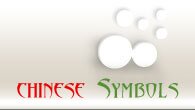|
Chinese Medicine : Therapeutic Principles
Therapeutic Principles
Therapeutic principles are the basis for guiding clinical practice. They include biao (branch) and ben (root), that is, the principle of treating a disease by analyzing both its root cause and symptoms. Thus, factors such as climatic and seasonal conditions, geographic localities, and the patient's personal conditions must be considered in treatment, along with strengthening the zheng qi (the patient's body resistance or anti-pathogenic factors) and dispelling the xie qi (pathogenic factors).
1. The Principle of Biao and Ben
Biao and ben are contrasting concepts used to indicate the primary and secondary relationships of contradictory sides in various kinds of diseases and syndromes. For example, body resistance (or anti-pathogenic factors) are considered ben (root) while pathogenic factors are biao (branch); etiology is ben, symptoms is biao; primary disease in ben, secondary disease is biao; pathological changes of internal organs are ben, body surface is biao, etc.
The principle of biao and ben is used in traditional Chinese medicine to treat the symptoms at the acute stage and to treat the root of disease at the chronic stage. If biao and ben have the same severity, treatment should then be applies to both ben (root cause) and biao (symptoms).
2. Strengthening the Zheng Qi and Dispelling Xie Qi
Zheng qi is the ability of body resistance against disease. Xie qi are the pathogenic factors. Strengthening the zheng qi and dispelling xie qi are two differing therapeutic principles. Generally, strengthening the zheng qi is used where body resistance is weak and pathogenic factors are not strong; dispelling xie qi is applied to cases which have excessive pathogenic factors, and also an unweakened body resistance. First, strengthening zheng qi and then dispelling xie qi is used in cases where the zheng qi and xie qi are not weakened. The simultaneous strengthening of zheng qi and dispelling of xie qi is applied in cases of weak body resistance where pathogenic factors are in excess. When this principle is employed, one must differentiate between what is primary and what is secondary. In strengthening zheng qi, allow for unforeseen pathogenic factors, and when dispelling pathogenic factors, do not influence the body resistance. It is necessary to make the principles of "strengthening body resistance" and "dispelling pathogenic factors" complement each other.
3. Principle of Treatment Based on Climatic and Seasonal Conditions, Geographic Localities, and Patient's Personal Conditions
Disease is the outcome of the struggle between body resistance and pathogenic factors. Therefore, in the treatment of a disease certain factors and conditions should be considered, that is, time (seasonal and climatic conditions), place (geographical location and environment), and personal characteristics (living customs, age, sex, and body constitution). In the clinical application of medicinal herbs these factors are also very important. This is an important therapeutic principle guiding clinical practice in traditional Chinese medicine. Examples follow:
In summer, the surface pores on the body are open or loose, while in winter they are closed and tight. If the body is affected by the same exogenous pathogenic wind and cold both in summer and winter then pungent drugs having a warming property of relieving exterior syndromes should not be administrated in summer, but should be used in large dosage in winter. Because summer is humid, the pathogenic factors which cause diseases in this season always mix with damp. Therefore, medicinal herbs used for summer diseases should be combines with herbs having properties of dissolving or removing damp.
The weather in mountainous regions and on plateaus is dry and cold, medicinal herbs having cold, cool, bitter, or dry properties should not be prescribed in large doses. White the climate in low-lying country is warm and humid, so drugs having cool and damp dissolving properties can also be used in large dosages.
Children have a body constitution of young and tender yang, for which qi and blood are not yet abundant, and a flourishing vitality. The vitality of aged people, however, is declining and qi and blood are insufficient. Therefore both children and elderly patients should not be prescribed drugs having strong properties, nor be given large dosages.
Obese patients are liable to have diseases caused by internal pathogenic damp, so drugs with cool, moist properties must not be given. Most this patients are suffering from illness due to pathogenic fire, thus medicinal herbs with warm dry properties are not suitable.
The same disease, but with different sexes, different physiological characteristics, and different body constitutions should be treated accordingly.
Chinese medical theory, as a product of traditional Chinese culture, reflects an extraordinary sensitivity toward Nature. Throughout the world, traditional Chinese medicine is praised for its holistic attitude in the understanding and curing of disease. With a 2,000-year written tradition, Chinese medical culture has accumulated an impressive body of theoretical and practical experience.
In this introductory volume we have presented the basic elements of Chinese medical theory in a systematic way designed for the English language reader. Our aim is to provide our reader with a "short cut" through the complexities of Chinese medical theory. The other volumes in this series will build upon the theoretical foundations set in this volume.
|
